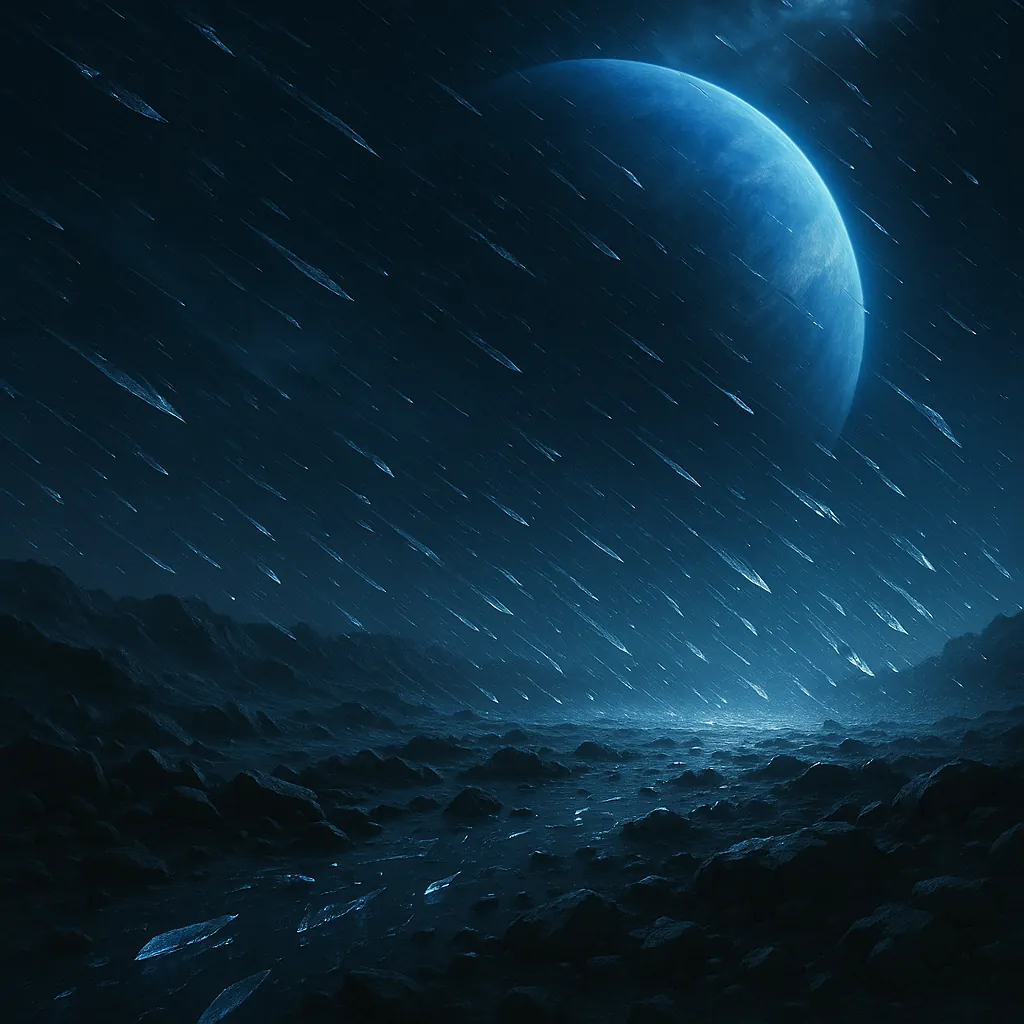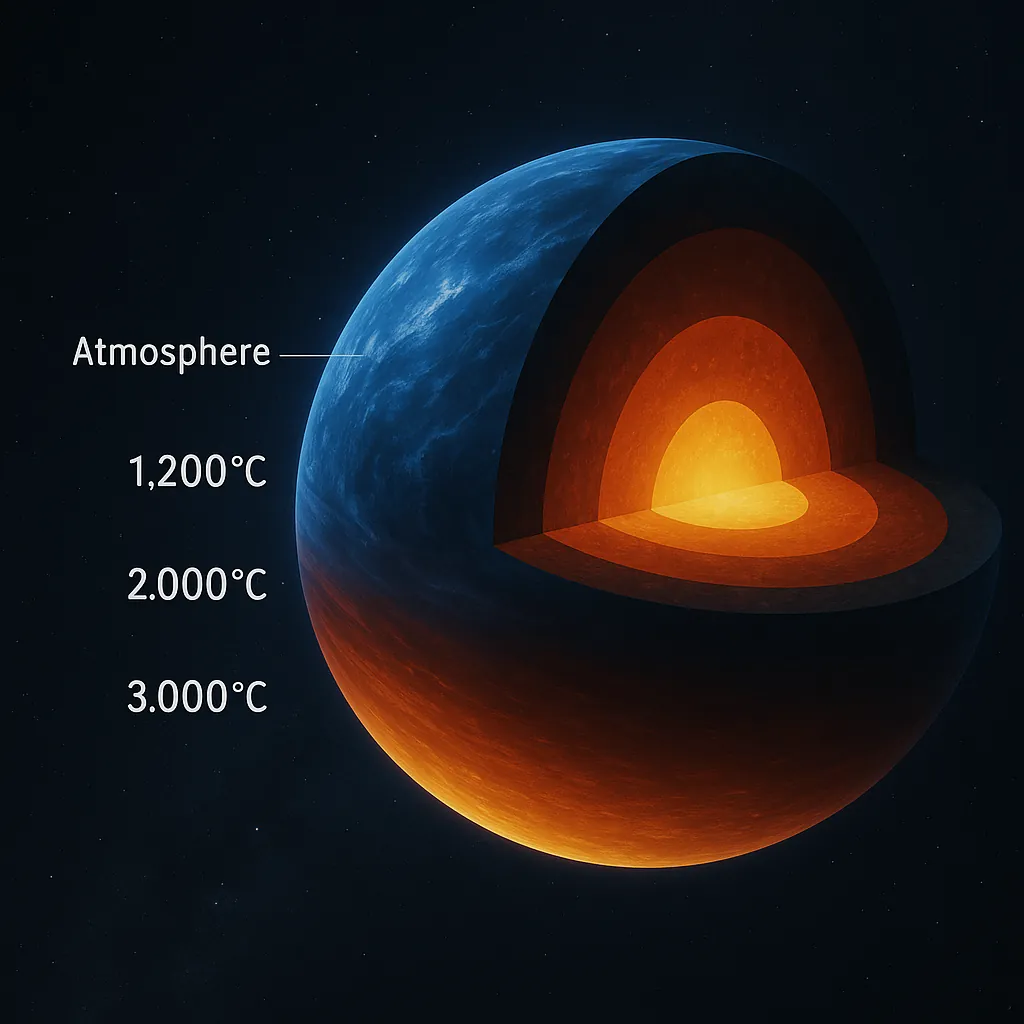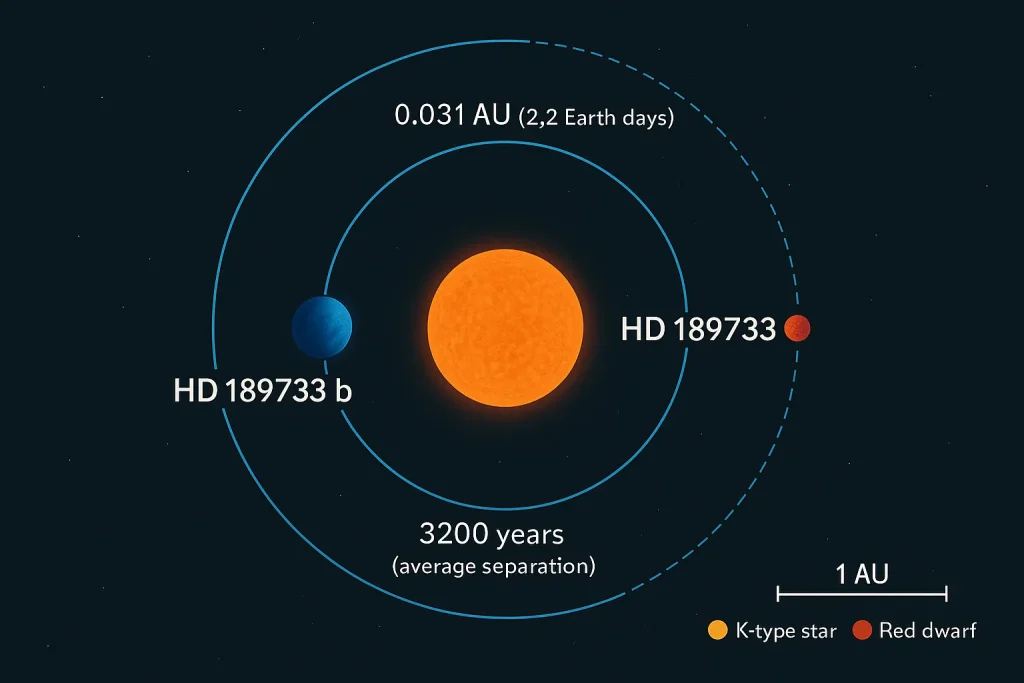Opening Perspectives
HD 189733b stands out as an exoplanet that sparks curiosity with its bizarre features. Situated 64.5 light-years away in Vulpecula, it orbits a K-type star closely. Discovered in 2005, it fits the hot Jupiter category due to its size and orbit. Its deep blue color, noted by Hubble in 2013, mimics Earth’s oceans from afar. Yet, this allure conceals a deadly environment few can fathom. The planet’s proximity to its star, at 0.0313 AU, drives its extreme traits. This piece explores what makes it so enthralling.
What draws scientists is its unearthly weather, unseen on our planet. Winds surge past 8700 km/h, outstripping Earth’s fiercest storms by far. Molten glass rains sideways, formed from silicates in its scorching heat. With an orbit of just 2.2 days, its closeness to the star fuels this chaos. The article will delve into the science behind these phenomena. Its striking appearance and conditions offer a unique study case.
The blue hue comes not from water but from light scattering by its clouds. Silicate particles create this effect, giving it a vivid look. This has made it a prime target for research over years. From its wild storms to its makeup, it reveals much about distant worlds. Let us trace its discovery and basic traits next.

Unveiling the Planet
The first sighting of HD 189733b came on October 5, 2005, by a French team using transit methods. Located in Vulpecula, it sits 64.5 light-years from us, a close neighbor in cosmic terms. Its mass is 1.13 times Jupiter’s, with a radius 11.4% larger, marking it as a gas giant. Orbiting at 0.0313 AU, it completes a cycle in 2.2 days due to tidal locking. One side always faces its star, pushing temperatures above 1000°C. This setup shapes its intense environment.
Its discovery opened new doors in exoplanet science. The transit across its star allowed detailed atmospheric analysis with spectroscopy. Classified as a hot Jupiter, it moves at 152 km/s, a testament to its speed. The system’s brightness aids observation from Earth and space. Telescopes have tracked it extensively since then. This accessibility has fueled ongoing studies.
In 2007, Spitzer mapped its thermal profile, showing a 500°F split between sides. This revealed how heat moves across its surface. The data highlighted dynamic patterns for further exploration. Research continues to build on these insights. Let us now examine its chemical structure.

Elemental Structure
The environment here is a volatile blend of gases and particles. Its deep blue color stems from silicate clouds scattering light, a fact established in 2013. These silicates condense into glass droplets, adding to its alien nature. Sodium and potassium absorb specific wavelengths, altering its spectrum. This composition sets it apart from familiar worlds. The HD 189733b atmosphere reaches extreme conditions.
Analysis shows carbon dioxide, water vapor, and methane in its air. The James Webb Space Telescope detected hydrogen sulfide in 2024, a new finding. This gas, with its foul odor, emphasizes its harshness. Pressures hit 410 mbar, with temperatures from 1340 to 1540 K. Silicate haze shapes its look and weather. The HD 189733b atmosphere is a complex mix.
Evaporation occurs, losing 1-100 gigagrams of mass per second. Stellar radiation drives this, seen in its hydrogen exosphere. In 2013, it blocked three times more X-rays than visible light. These traits reveal dynamic processes at work. Magnesium silicate adds to its weather patterns. Let us explore its wild climate next.

Stormy Conditions
This world is known for its ferocious weather, driven by its star’s heat. Winds exceed 8700 km/h, far surpassing Earth’s strongest gales. The 500°F difference between sides powers these blasts. Spitzer’s 2007 map showed heat shifting 30 degrees east of the hottest spot. This movement creates a turbulent system. The HD 189733b atmosphere is a whirlwind of force.
The standout feature is its sideways glass rain, made from molten silicates. Heated beyond 1000°C, these particles form droplets blown horizontally. NASA warns of deadly shards cutting through anything in their path. The silicate haze enhances its blue tint, adding to its menace. This makes it a hostile marvel. The HD 189733b atmosphere hosts this deadly rain.
Daytime hits nearly 2000°F, enough to melt lead easily. Tidal locking keeps one side roasted constantly. The nightside offers little relief, staying harsh. This environment blends heat with violent storms. These patterns shed light on hot Jupiter climates. Let us consider its role in observations next.

Astronomical Insights
Its proximity and transit make it a key subject for astronomers. At 64.5 light-years, it crosses its star, enabling atmospheric study. Its deep blue color was confirmed in 2013, a first for exoplanets. The 2007 thermal map was a groundbreaking achievement. These efforts deepen our knowledge of distant worlds. The HD 189733b atmosphere is a research focus.
Hubble and Spitzer have tracked its changes over time. In 2013, X-ray data showed it blocks more X-rays than visible light. James Webb’s 2024 detection of hydrogen sulfide added detail. These studies refine models of atmospheric behavior. Its 3% light blockage aids precise analysis. This research benefits wider exoplanet science.
It serves as a model for studying hot Jupiters and their formation. Its extreme conditions test climate theories for other planets. The vivid hue and glass rain draw public interest. NASA’s outreach highlights its appeal. Ongoing studies promise more discoveries. The HD 189733b atmosphere remains a vital topic. Let us conclude with its significance.

Leave a Reply